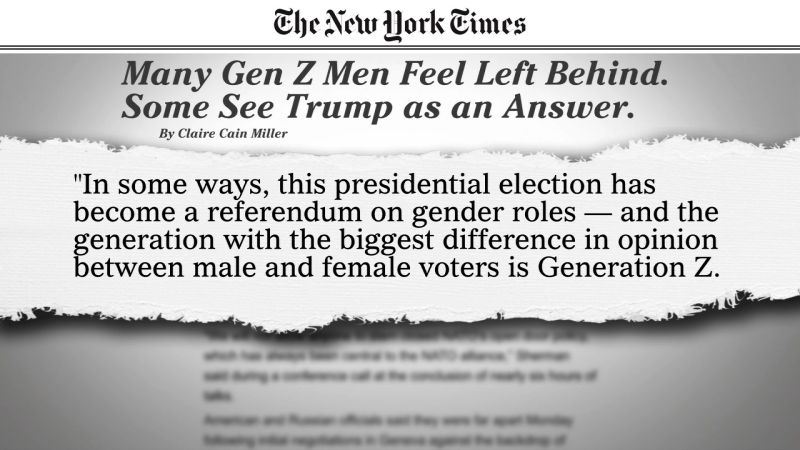The New York Times/Siena College poll highlights a significant gender divide among young voters, with men between the ages of 18 to 29 favoring former President Trump over Vice-President Harris by 13 points. In contrast, women in the same age group are choosing Harris over Trump by 38 points. This 51-point gender gap is the largest compared to other age groups, indicating a strong polarization among young voters. Trump is looking to target young men through social media personalities in an attempt to counter Harris’ growing popularity among women in this age group.
The poll results reveal a clear preference among young men for Trump, while young women overwhelmingly support Harris. This stark divide reflects broader trends in gender politics and the appeal of candidates among different demographic groups. Trump’s efforts to reach out to young men through social media influencers suggest a recognition of the importance of this voter bloc in shaping public opinion and electoral outcomes. The effectiveness of this strategy remains to be seen, as Harris continues to gain traction among young women.
The gender gap among young voters underscores the complex dynamics at play in contemporary politics, where social media and other forms of communication play a crucial role in shaping public opinion. Trump’s appeal to young men through alternative media channels reflects a broader trend of politicians using non-traditional platforms to reach voters and mobilize support. This strategy may prove to be successful in engaging young men who may be skeptical of mainstream political messaging.
The New York Times/Siena College poll sheds light on the evolving political landscape and the changing dynamics of voter behavior among different demographic groups. The strong support for Harris among young women and Trump among young men highlights the divergent perspectives and preferences within this age group. Trump’s efforts to target young men through social media personalities suggest a strategic response to Harris’ popularity among young women, as both candidates seek to mobilize support and build momentum in the run-up to the next election.
The gender gap among young voters reflects broader trends in gender politics and the ways in which candidates appeal to different segments of the electorate. Trump’s efforts to reach out to young men through social media influencers signal a recognition of the importance of engaging this demographic group in shaping public opinion and electoral outcomes. As the political landscape continues to evolve, candidates will need to adapt their strategies to effectively communicate with and mobilize support from diverse groups of voters.
Overall, the New York Times/Siena College poll highlights the significant gender divide among young voters, with men favoring Trump and women favoring Harris by wide margins. Trump’s outreach to young men through social media personalities reflects a strategic effort to counter Harris’ momentum among women in this age group. As the political landscape continues to evolve, candidates will need to navigate these complex dynamics and engage with diverse groups of voters in order to build support and gain momentum in the lead-up to the next election.


